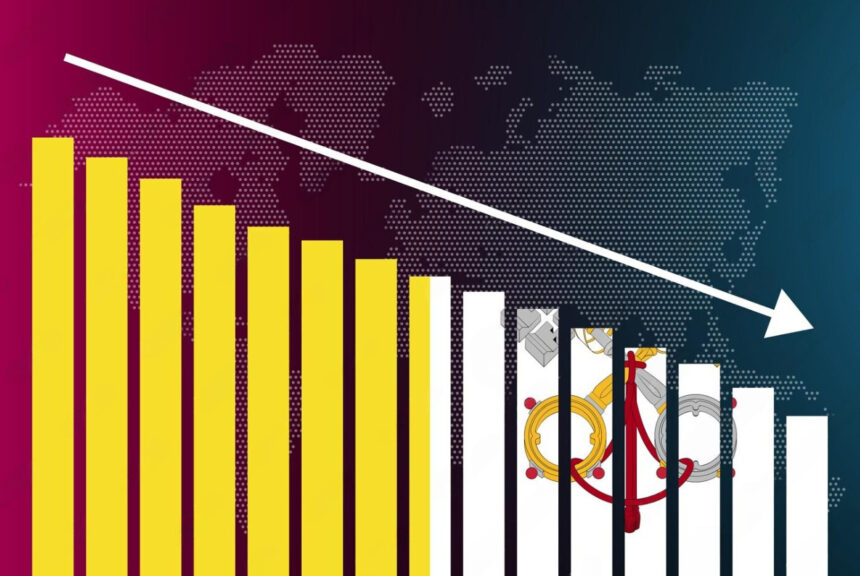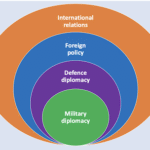The phrase “misuse of statistics propaganda” highlights a troubling phenomenon in modern communication. While statistics are often used to provide clarity and evidence, their misuse can distort reality, manipulate public opinion, and serve propaganda purposes. The deliberate presentation of misleading data can be powerful, creating false narratives that influence individuals, organizations, and even governments.
- Why Is the Misuse of Statistics Common in Propaganda?
- How Are Statistics Manipulated for Propaganda?
- What Are the Consequences of Misusing Statistics in Propaganda?
- How to Identify Misuse of Statistics Propaganda?
- When Has the Misuse of Statistics Propaganda Been Most Prominent?
- What Steps Can Be Taken to Combat Statistical Propaganda?
- Conclusion
- FAQ’s
Propaganda leveraging skewed statistics is not a new concept, but its impact has grown exponentially in the digital age. From political campaigns to corporate advertising, numbers can be manipulated to fit an agenda, leaving the audience misinformed or confused. This article explores the misuse of statistics in propaganda, detailing the common techniques, the psychology behind such practices, and how to identify and combat misinformation.
Understanding the misuse of statistics is essential in today’s information-rich world, where numbers often carry an illusion of authority. By unpacking this topic, we aim to empower readers with critical thinking tools to navigate misleading claims and uncover the truth.
Why Is the Misuse of Statistics Common in Propaganda?
Statistics have an inherent authority that makes them powerful tools in communication. Their ability to condense complex information into easily digestible figures often leads people to accept them without question. Propaganda relies on this trust, using statistics to lend credibility to otherwise unfounded claims. Whether through cherry-picking favorable data, distorting percentages, or presenting isolated figures out of context, those engaged in propaganda manipulate numbers to craft persuasive but misleading narratives.
The prevalence of digital platforms has further amplified this issue. In a fast-paced media environment, the average individual rarely has the time or expertise to scrutinize statistical claims. Propagandists take advantage of this, crafting statistics-based messages that resonate emotionally or align with existing biases, making the misinformation more likely to be accepted and shared.
How Are Statistics Manipulated for Propaganda?
Cherry-Picking Data
Cherry-picking involves selecting specific data points that support a particular narrative while ignoring others that provide a fuller or opposing picture. This creates a skewed representation of reality.
Misleading Graphs and Visuals
Propagandists often use visual aids such as graphs and charts to mislead audiences. Techniques include altering scales, omitting axes, or using deceptive proportions to exaggerate or downplay trends.
Misrepresentation of Averages
Presenting averages without context can be misleading. For instance, an average income statistic may hide significant disparities within a population, leading to an inaccurate understanding of economic conditions.
Using Large Numbers Without Context
Propaganda frequently leverages large, impressive-sounding numbers without providing context or comparisons. This can make a situation seem far more significant than it truly is. яндекс
Omitting Relevant Variables
Excluding critical factors that influence a statistic can distort its meaning. For example, claiming a policy reduced unemployment without mentioning broader economic conditions misrepresents causality.
What Are the Consequences of Misusing Statistics in Propaganda?
The misuse of statistics propaganda has far-reaching implications, impacting individuals, organizations, and societies.
- Misinformation: Misleading statistics fuel misinformation, shaping public perceptions and decision-making based on inaccurate or incomplete data. This undermines informed debate and public trust in credible sources.
- Polarization: By manipulating statistics to support extreme viewpoints, propagandists contribute to societal division and entrenchment of biases, eroding efforts to find common ground.
- Economic and Political Impact: Propaganda rooted in statistical manipulation can influence elections, sway public policies, and disrupt markets, leading to long-term consequences.
- Erosion of Trust: When statistical misuse is exposed, it diminishes trust in institutions, including media outlets, governments, and corporations, even when they present accurate data in the future.
How to Identify Misuse of Statistics Propaganda?
Evaluating the Credibility of Data Sources
Guarding against misinformation begins with questioning the credibility of the source providing the data. Reliable sources, such as reputable research institutions or well-established organizations, typically adhere to transparency by presenting their methodologies and raw data. Scrutinizing the origin of statistical claims helps to identify whether the data is trustworthy or potentially manipulated for a specific agenda. Assessing the track record and reputation of the source is a critical first step in evaluating any statistical information.
Understanding the Importance of Context
Statistics without context can be misleading. To assess their accuracy, it is essential to consider factors such as the time frame, sample size, and relevant variables that may have influenced the results. For example, a statistic about unemployment rates may look alarming unless it specifies the economic conditions or demographic details that shaped the data. Ensuring that sufficient context accompanies any statistical claim allows for a more comprehensive understanding of its implications.
Identifying Contradictions in Data
Comparing statistical claims with other reputable sources can reveal inconsistencies or omissions that suggest manipulation. Contradictory evidence or missing details may indicate cherry-picking or selective reporting, where only favorable data points are highlighted to support a particular narrative. Cross-referencing information with reliable datasets ensures a more balanced perspective and helps identify instances of statistical distortion.
Analyzing Visual Representations of Data
Graphs and charts are powerful tools for presenting data but are also prone to manipulation. It is crucial to analyze visuals critically, paying close attention to elements such as scales, labels, and omitted data. Adjustments in visual proportions or incomplete graphs can create misleading impressions about trends or relationships. By scrutinizing these elements, individuals can better assess whether the visual accurately reflects the underlying data.
Understanding Key Statistical Metrics
A foundational knowledge of statistical concepts, such as means, medians, and margins of error, is essential for evaluating claims. Misrepresenting or oversimplifying these metrics can significantly alter their interpretation. For instance, reporting an average income without mentioning the distribution of wealth can mask significant disparities. Familiarity with these metrics allows individuals to interpret statistics more critically and avoid falling prey to misleading conclusions.
By adopting these practices, individuals and organizations can effectively navigate the challenges of statistical manipulation and safeguard themselves against misinformation. This proactive approach ensures that data serves as a tool for informed decision-making rather than a mechanism for distortion.
When Has the Misuse of Statistics Propaganda Been Most Prominent?
- Political Campaigns: During elections, statistics are often weaponized to paint opponents in a negative light or exaggerate the success of a candidate’s policies.
- Media Reporting: Sensationalized news headlines frequently misuse statistics to attract attention, often at the expense of accuracy.
- Corporate Marketing: Businesses sometimes distort data to exaggerate the benefits of their products or downplay potential risks, influencing consumer behavior.
- Public Health Crises: During events like pandemics, statistical manipulation can create panic or downplay serious risks, undermining public trust in healthcare systems.
What Steps Can Be Taken to Combat Statistical Propaganda?
Promoting Education on Statistical Literacy
Combating statistical propaganda begins with empowering individuals through education. Teaching critical thinking and statistical literacy in schools and workplaces equips people to question and evaluate the data presented to them. Understanding basic statistical concepts, such as averages, margins of error, and sample sizes, helps individuals identify potential manipulation in reports, graphs, and claims. By fostering an informed public, society can build a stronger defense against the misuse of statistics in propaganda.
Encouraging Transparency in Data Reporting
Transparency is crucial for ensuring the credibility of statistical information. Organizations must be required to publish raw data and the methodologies behind their conclusions, allowing for independent verification and analysis. When data is openly available, the likelihood of manipulation decreases, as any discrepancies or biases can be quickly exposed. Transparency not only promotes accountability but also strengthens public trust in legitimate sources of information.
Supporting Fact-Checking Initiatives
Fact-checking organizations play a vital role in identifying and correcting instances of statistical propaganda. These independent entities analyze claims, verify data, and provide accurate interpretations, helping to counteract misinformation. Supporting these initiatives, whether through funding or public awareness, ensures that individuals have access to reliable resources when navigating questionable data. Fact-checking efforts also hold propagandists accountable, reducing their ability to manipulate statistics without scrutiny.
Regulating Misinformation in the Digital Age
The digital age has amplified the reach of statistical propaganda, making it essential for governments and tech companies to collaborate in regulating misinformation. Platforms must develop tools and policies to detect and limit the spread of misleading statistical claims. This includes implementing algorithms to flag distorted data, promoting verified content, and penalizing repeat offenders. While preserving freedom of expression is important, targeted efforts to address statistical propaganda can protect the public from the harmful effects of manipulated information.
By combining education, transparency, fact-checking, and regulation, society can create a robust framework to counter statistical propaganda. These efforts ensure that data remains a tool for clarity and truth rather than a weapon for manipulation.
Conclusion
The misuse of statistics propaganda demonstrates how easily numbers can be turned into tools of manipulation. By cherry-picking data, distorting visual representations, and omitting crucial context, propagandists exploit the authority of statistics to influence public opinion and drive agendas. Recognizing these tactics and fostering critical thinking are essential steps toward combating misinformation. With greater statistical literacy and transparency, individuals and societies can push back against the spread of misleading information and ensure that data serves as a tool for clarity, not confusion.
FAQ’s
Q. What is statistical propaganda?
A. Statistical propaganda involves manipulating data to influence public opinion or promote specific agendas. It often distorts context or omits critical information.
Q. Why are statistics used in propaganda?
A. Statistics carry an inherent authority that makes them persuasive. They are used in propaganda to create credibility, even when the data is manipulated or misrepresented.
Q. How can I identify misuse of statistics?
A. Look for incomplete context, questionable sources, and visual manipulations like misleading graphs. Comparing data from multiple credible sources can also help.
Q. What are the consequences of statistical propaganda?
A. Statistical propaganda fuels misinformation, erodes trust in institutions, and exacerbates societal polarization by presenting biased or false narratives.
Q. How can we combat statistical propaganda?
A. Improving statistical literacy, promoting transparency in data reporting, and supporting fact-checking initiatives are key strategies for combating statistical propaganda.




